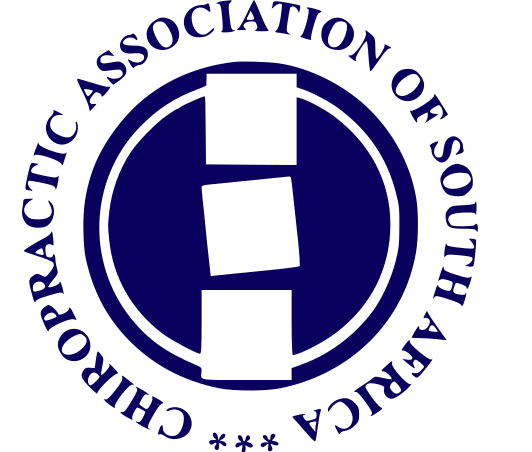History
From 1926 to Now
Chiropractic in South Africa
It has taken years of struggle and determination for chiropractic to become a recognised profession in South Africa. Today, chiropractic is one of the professions included under the Allied Health Professions Council of South Africa (AHPCSA) and boasts over 800 practitioners. The first chiropractic faculty was opened in Technikon Natal, now known as Durban University of Technology (DUT) in 1989. The course is still available to aspiring chiropractic students at this faculty, as well as at the University of Johannesburg (UJ). National accreditation of these courses was achieved in 2008, and international accreditation followed in 2010. Below is a timeline showing the path towards obtaining legislation and recognition in South Africa, and how we fought to get the profession the respect that it has today.
Chiropractic Timeline
1926
The first chiropractors arrive in South Africa, establishing a practice in Adderley Street, Cape Town.
1928
The South African Medical and Dental Act comes into effect. However, chiropractic services are not included in the Act.
1940
The first chiropractic association is formed in Johannesburg.
1960
The chiropractic profession continues to grow and the need for legislation to govern and control it becomes more apparent than ever.
1961
A private members bill is introduced in Parliament by Mr B J van der Walt, MP for Pretoria West, seeking legal recognition for chiropractic.
1962
Dr Albert Hertzog, Minister of Health, appoints a Commission of Inquiry into chiropractic. The findings of the report are negative.
1970
Dr Carel de Wet, Minister of Health, is approached by the unified profession to introduce positive legislation for chiropractic. Being anti-chiropractic, he draws on the 1962 Report as motivation for his limited legislative recognition of the profession.
1971
CASA is formed out of the amalgamation of the two previously existing chiropractic associations.
The outcome is Act 76 of 1971, better known as the Chiropractors Act. The Act granted recognition to qualified chiropractors already practising in South Africa, as well as to South Africans studying to become chiropractors, but it also effectively freezes the profession by not allowing any further chiropractors to register and practice in South Africa.
1980
CASA is granted an interview with Dr LAPA Munnik, Minister of Health, leaving CASA with a positive feeling about the future of chiropractic in South Africa.
1981
Various meetings are held with the SA Medical and Dental Council (SAMDC) in order to explore the possibility of chiropractic falling under the wing of that council. This request is subsequently turned down by the Council.
After a meeting between CASA and the Homoeopathic Association of South Africa (which includes representation of osteopaths, naturopaths and herbalists) with Minister, Dr LAPA Munnik (at his request), the Minister arranges for both the chiropractors and homeopaths to each separately present evidence in support of their respective professions to the SAMDC and the South African Medical Association.
This is held in Cape Town on 10th of August 1981
The South African Medical and Dental Council (SAMDC), being the advisory body to the Department of Health, is asked by the Minister, Dr LAPA Munnik, to take the two professions “under their wing”.
In November of 1981, and much to CASA’s dismay, CASA learns that the SAMDC has voted by 17 votes to 16 against the Minister’s request.
1982
After much time working with the Department of Health, and with the positive driving force of Minister, Dr LAPA Munnik, the Associated Health Service Professions Act (Act 63 of 1982) becomes law, with the exception of two provisions (re-opening of the registers and educational facilities).
The Associated Health Service Professions Board meets for the first time in Pretoria.
A new Minister of Health, Mr Cornelius “Nak” van der Merwe, is appointed.
CASA’s president requests an interview with the new Minister.
1984
The Board spends time working with the Department of Health, largely developing the Regulations required in terms of the Act.
CASA is unofficially informed that its legislation is set to be amended the following year to re-open the registers so that new chiropractors can start to practice, and that provision will be made to establish educational facilities.
A delegation from the Board is sent to visit chiropractic, homeopathic, naturopathic and herbal educational and accrediting institutions in the USA, Canada, the UK and Europe to establish communications with such institutions and acquaint the Board with current educational standards and research activities internationally.
1984 - 1989
On the 7th of June 1985, CASA learns that the Bill has been approved with very little opposition.
Draft curriculae are developed separately for chiropractic and homoeopathy. These are submitted to all universities and Technikons asking if they are interested in offering such programmes.
The unanimous decision is to approach the then Technikon Natal (now the Durban University of Technology). Many meetings are held with the Department of Education, with the first intake of students occurring in January of 1989.
The first exit level of the educational programme is at the Master’s degree level, it being the first in the world to do this, setting a standard that other university programmes internationally have since followed.
1991
Wits Technikon (now the University of Johannesburg) chiropractic faculty is established.
2010
International accreditation with the European Council on Chiropractic Education (ECCE).
Find out More
CASA is committed to the highest levels of excellence in chiropractic education, patient care, standards of practice and continuing professional development.
Contact Us
+27 (0) 86 188 7772
Email Us
info@casacouncil.co.za
